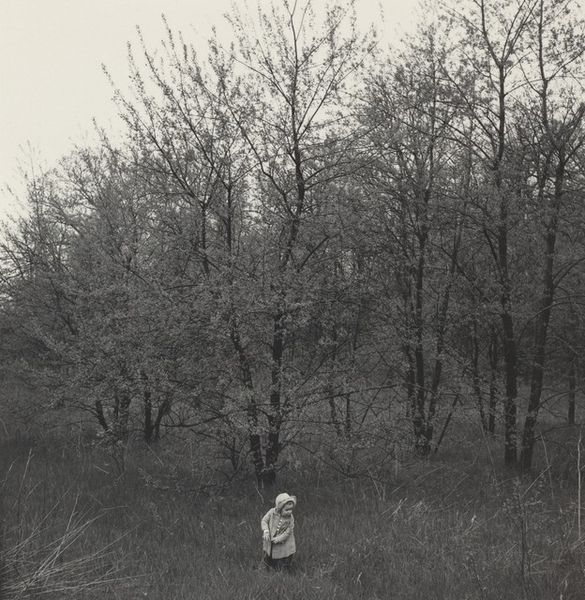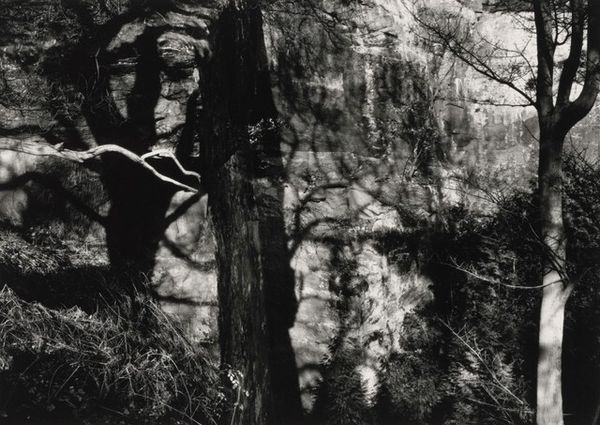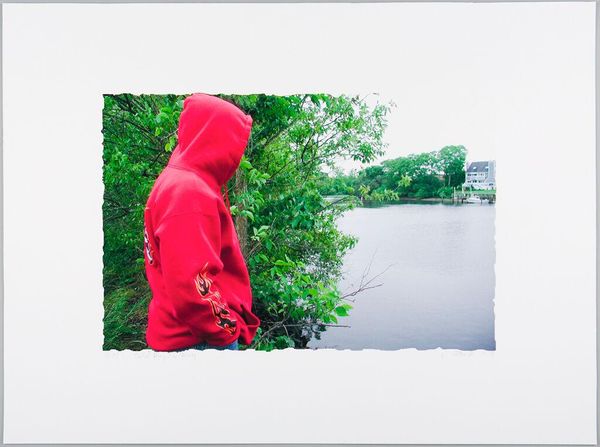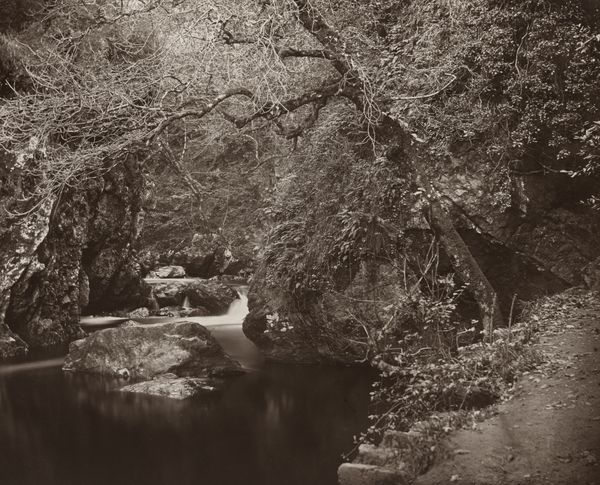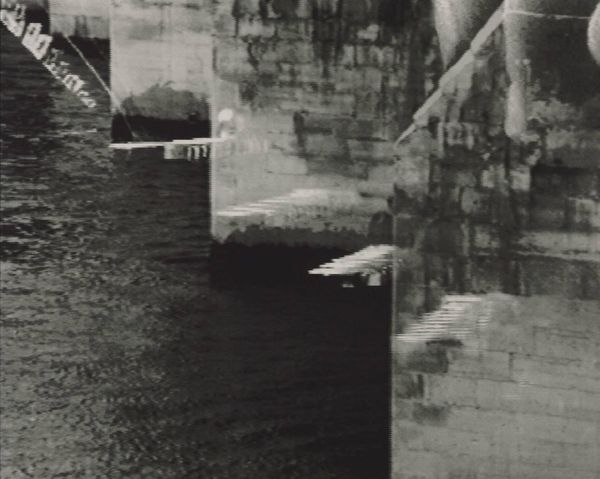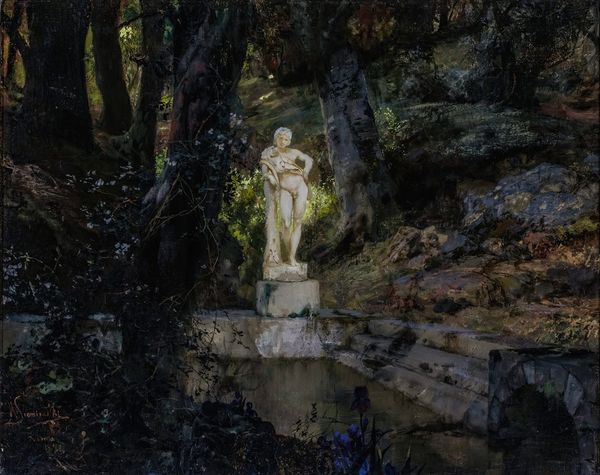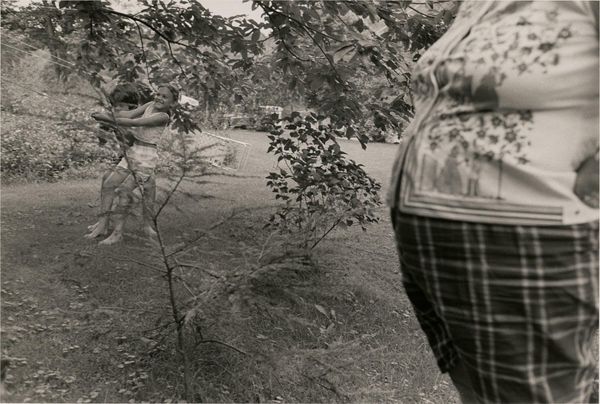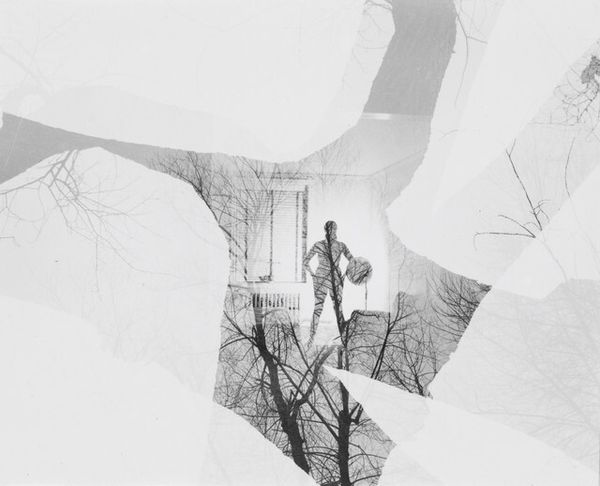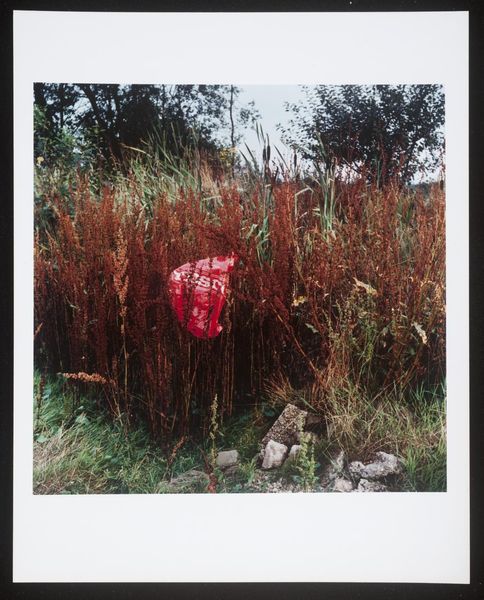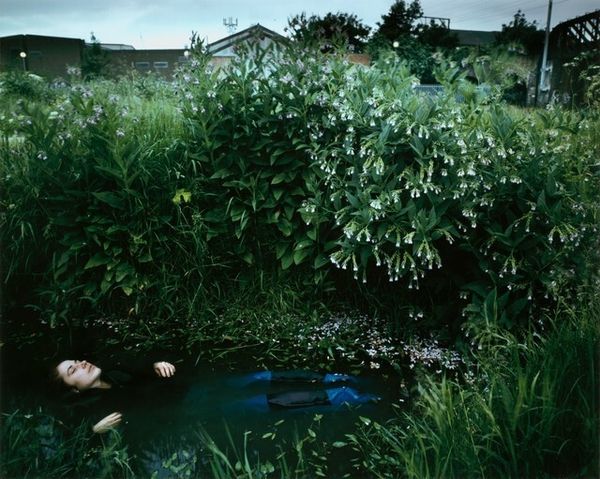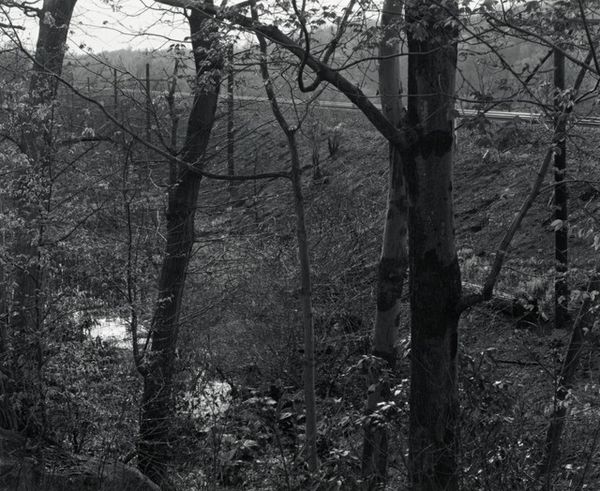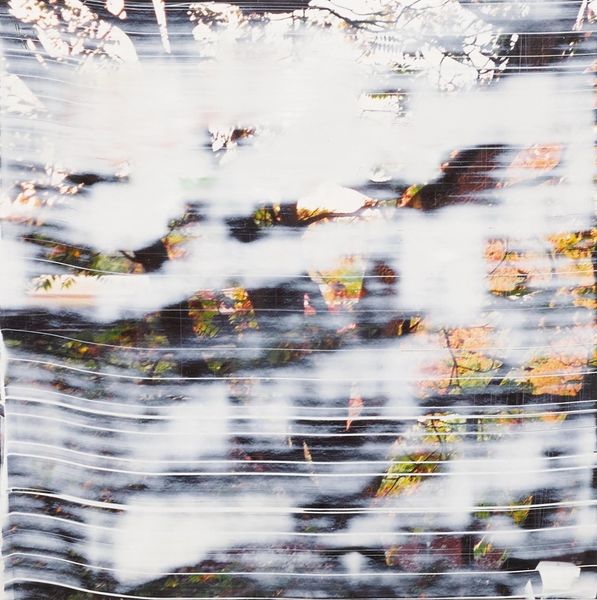
Dimensions: image: 121.92 × 152.4 cm (48 × 60 in.)
Copyright: National Gallery of Art: CC0 1.0
Curator: This is Tom Hunter’s “Woman Mugged on Towpath,” a C-print photograph from 2003. Editor: My initial impression is of striking contrasts – the flatness of the brick wall versus the depth of the canal water, and that pop of scarlet against the muted greens and browns. Curator: Indeed. Hunter's work often tackles the complexities of contemporary urban life. With "Woman Mugged on Towpath" he uses the visual language and codes often associated with art history to bring forth narratives of often marginalized women in urban spaces. The woman's posture and the bold splash of color, almost a performative defiant scream, speaks to issues of gendered violence in our society. It creates a stark juxtaposition with the gritty realism of the graffiti-covered wall and the shadowed canal. Editor: From a formal standpoint, consider the strong horizontals established by the towpath and the graffiti. The reflected light on the water is abstracted into fluid shapes. How the red coat punctures the urban environment, acting as the singular key feature is quite provocative. This chromatic intervention is key. Curator: Absolutely, but I read that red coat not just as a formal intervention, but as a symbol of visibility, a challenging presence. This composition makes you, as the viewer, hyper-aware of the constant negotiations and precariousness of urban spaces for women and for all persons inhabiting liminal social status. The composition is deliberate in implicating us in this narrative. Editor: It’s an image dense with symbolism, even through seemingly simple compositional tactics. The composition divides the work almost in half, between hard angular lines, softened by the introduction of organic forms through flora; it's really striking. The water looks so still and almost viscous. Curator: Precisely! I interpret that reflective quality, with obscured figures, to mean not only physical urban elements are reflected there, but the viewer also is confronted with their role in urban space as active observers complicit in the narrative and discourse. This approach goes hand in hand with a lot of feminist photography practices throughout history that intend to challenge normative ways of seeing that often oppress the sitter. Editor: A lot to think about; I’m looking at it differently already. Thanks. Curator: My pleasure. Hunter invites us to do just that—to rethink our gaze and awareness, hopefully leading to a more ethical outlook.
Comments
No comments
Be the first to comment and join the conversation on the ultimate creative platform.
